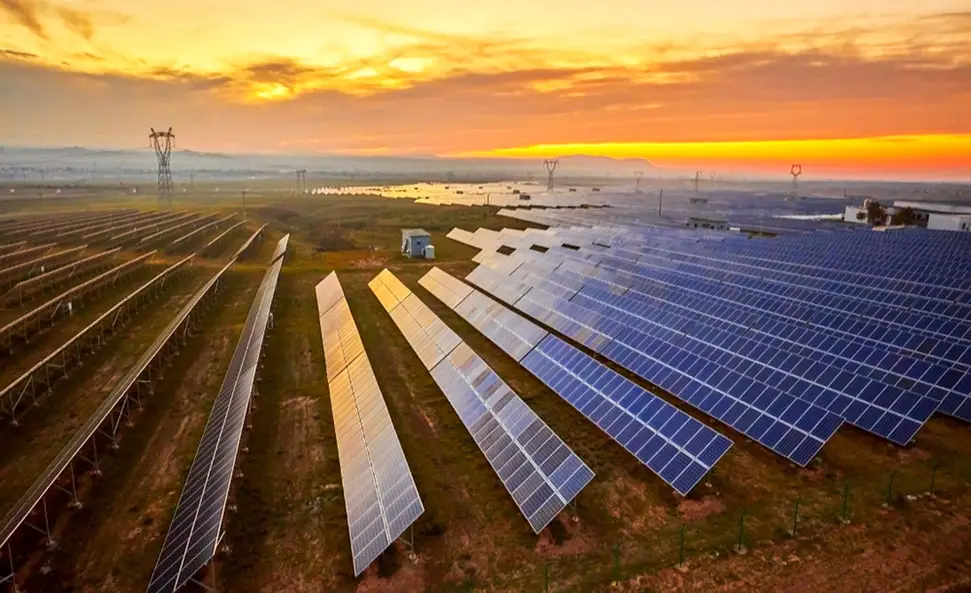Is Solar Power 100% Green?
Solar power is a renewable and sustainable energy source that has been gaining popularity in recent years. This form of energy is produced by converting sunlight into electricity, and it is considered to be one of the cleanest sources of energy available. Solar power is a great alternative to other energy sources such as fossil fuels, which produce emissions that can be damaging to the environment. While it is true that solar energy is largely considered to be green, there are some environmental impacts associated with its production and use, so it is not always 100% green. The key to making solar power as green as possible is to ensure that it is produced and used responsibly.
What is Solar Power?
Solar power is a clean and renewable energy source. It is generated by capturing the energy of the sun’s rays and converting it into electricity. Solar energy is a sustainable, cost-effective, and environmentally friendly solution to meet our energy needs. It can be used to power homes, businesses, and even entire cities. Solar power can reduce our reliance on fossil fuels and help to reduce greenhouse gas emissions. It is also one of the most reliable and inexpensive sources of energy available. Solar energy can be used for a variety of purposes, from heating and cooling buildings to providing electricity for lights, appliances, and even transportation. Solar power is becoming increasingly popular as a renewable energy source and is an essential part of the fight against climate change.
Other Renewable Energy Sources
section
Renewable energy sources are a viable alternative to fossil fuels, and this section will provide an overview of the various types of renewable energy sources that are available. We will explore the potential of solar, wind, geothermal, biomass, and hydropower to meet our energy needs. We will also discuss the economic, environmental, and social benefits of these renewable energy sources. Additionally, we will review any potential challenges associated with the adoption of renewable energy sources. By providing this information, readers will be better informed and better equipped to make informed decisions about the type of energy source they use in their homes and businesses.
Advantages and Disadvantages of Solar Power
Solar energy has become an increasingly popular alternative energy source for many households and businesses. While solar power has a number of advantages, including the fact that it is renewable and produces no emissions, it also has some disadvantages that should be considered before making the switch.
The main advantage of solar energy is that it is a renewable energy source, meaning it can never be used up. This means that it is an environmentally friendly energy source, as it produces no emissions. Additionally, solar energy can be used in remote locations, such as off-grid homes, which can be difficult to connect to the grid.
On the other hand, there are some disadvantages associated with solar energy. One of the main disadvantages is the initial cost of installing the solar panels. Solar panels can be expensive, and the cost of installation can be even higher. Additionally, solar energy is also unreliable, as it is dependent on clear weather. Cloudy days can significantly reduce the amount of energy produced, meaning solar energy can not always be relied upon.
Overall, solar energy is a great alternative energy source, offering a number of advantages at the same time as presenting some potential disadvantages. It is important to carefully consider both the advantages and disadvantages of solar energy before deciding to make the switch.
The Cost of Solar Power
Solar power is one of the most cost-effective forms of renewable energy available today. With the cost of solar power dropping rapidly, many homes and businesses are now turning to this clean source of energy. The cost of solar energy has decreased significantly in recent years due to advancements in technology, increased demand, and government incentives. The cost of solar power depends on the size and type of installation, as well as the amount of energy produced. Solar power systems are more affordable than ever, with many homeowners and businesses achieving significant savings on their energy bills. With a wide variety of solar options available, it is easier than ever to find the best solution for your energy needs. With the cost of solar power continuing to decrease, it is an increasingly attractive option for those who are looking to reduce their energy costs.

Local and National Regulations for Solar Power
Solar power is becoming an increasingly popular source of renewable energy, providing an eco-friendly alternative to traditional energy sources. However, local and national regulations must be considered when installing or using solar power. Depending on your location, there may be restrictions on where and how solar panels can be installed, as well as the types of materials that can be used. It is important to research local and national regulations before installing solar panels to ensure that your installation is compliant and safe. Additionally, depending on your local regulations, you may be required to obtain permits or other documentation before installation. Understanding these regulations can help ensure that your solar power installation is efficient and compliant.
The Impact of Solar Power on the Environment
Solar power is an increasingly popular renewable energy source that is becoming more and more important in our quest to find sustainable solutions to the growing environmental crisis. Solar power is an environmentally friendly alternative to traditional energy sources, as it produces no emissions and is powered solely by the sun’s radiation. Solar energy also has the potential to reduce air pollution, as it does not require the burning of fossil fuels, which are responsible for many of the pollutants in our atmosphere. In addition, solar energy can reduce water consumption and reduce water pollution, as it does not require the use of water for cooling purposes. Solar power provides clean electricity that can be used to power homes, businesses, and public buildings, reducing our reliance on polluting energy sources. With the increasing demand for sustainable energy sources, solar power is an increasingly important part of the global effort to reduce emissions and conserve resources.
The Future of Solar Power
Solar power is one of the most promising sources of renewable energy. With the world’s population growing and energy demands escalating, the potential of solar power is immense. In addition to providing clean, renewable energy, solar power is cost-efficient and easily accessible to people all over the world. With continued technological advancements, the future of solar power looks brighter than ever before. Already, solar energy is being used to power homes, businesses, and entire communities. As storage technology continues to improve, solar power will become even more efficient and cost-effective. As the cost of installation continues to drop, more people will be able to access the benefits of solar energy. With the right incentives and investments, solar energy could become the world’s leading form of renewable energy. The future of solar power is full of promise and potential.
Conclusion
Although solar power is a renewable and clean form of energy, it is not necessarily 100% green. The production of solar panels uses a significant amount of energy and materials, including toxic chemicals. Additionally, solar energy is not always readily available due to the intermittency of sunlight and therefore may require the use of energy storage systems which can have their own environmental impacts. Therefore, while solar energy has the potential to provide green energy to the world, it is not 100% green.







